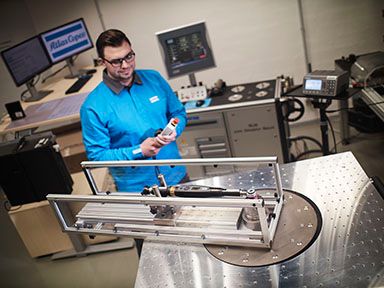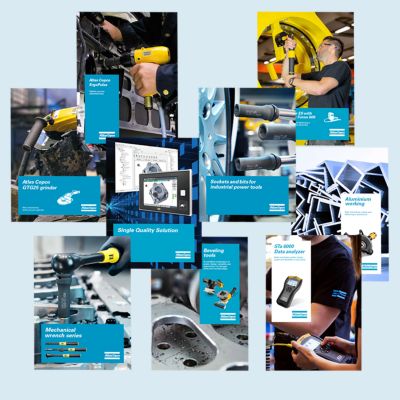In the era of Industry 4.0, the concept of Smart Factory represents a major leap forward in how manufacturing systems operate. Machines, systems, and people are all connected, and the data they generate helps manufacturers make better decisions faster. But beyond the buzzwords and futuristic imagery, one simple question remains: what can data actually do for manufacturers? In this article, we’ll explore the role of data in a Smart Factory, how it is used, and the values it brings to day-to-day operations.
Data as the foundation: connecting machines, systems, and people
In a Smart Factory, data is the backbone of everything. It flows constantly from machines, sensors, control systems, and workers. Data is collected in real time and shared across different functions—from production and maintenance to quality control and supply chain planning.
When tools and systems are connected, manufacturers gain a full view of what is happening on the floor. This transparency allows for faster responses, better planning, and improved coordination. Data creates a shared language between machines and people, helping everyone work more efficiently toward common goals.

What data can do: practical applications and business value
Smart Factories use data to solve everyday challenges and unlock new opportunities. Here are a few examples of how data helps:
- Optimize maintenance & Avoid unplanned downtime
By continuously monitoring equipment conditions and analyzing real-time data, maintenance can be scheduled, reducing unexpected breakdowns and minimizing disruptions to production. Predictive maintenance, based on machine data and previous failures, has been shown to reduce downtime by 30–50% and maintenance costs by 18–25%. Additionally, early detection of potential failures in an assembly line can prevent costly breakdowns, saving manufacturers millions of losses in production.
- Maximize equipment lifespan & Reduce waste and energy use
Identifying wear and potential failures early not only reduces downtime but also extends equipment lifespan by 20–40%. Monitoring equipment performance and analyzing production processes enable manufacturers to optimize operations, minimizing material loss and cutting energy consumption.
- Assure product quality & Automate defect detection
With real-time production data, manufacturers can identify subtle variations in key parameters like torque, temperature, and pressure that may lead to defects. Detecting these anomalies early enables immediate adjustments, maintaining consistent quality and preventing further issues.
AI-driven computer vision and sensor-based inspections can detect defects and quality anomalies in real time by analyzing details that are often undetectable to the human eye. Studies indicate that AI-based visual inspections can increase defect detection rates by up to 90% compared to traditional human inspections, which are typically subject to operator perception and experience.
Vision systems also help with further validating OK tightening, which could cause product quality issues in other parameters, and wrong NOKs, which lead to unnecessary rework and resource waste. This second verification of the tightening result plays an important role in continuously improving the assembly line.
- Improve safety on the factory floor
Data plays a key role in preventing workplace hazards in industrial manufacturing. Real-time monitoring and predictive analytics enable manufacturers to identify risks and implement safety measures proactively. For example, ALTURE®, Atlas Copco's data-driven service solution, monitors controller events to detect anomalies like overheating or unusual wear, flagging tools with critical events. This proactive approach helps prevent equipment failures that could lead to operator injuries or hazardous accidents. Additionally, ALTURE® provides real-time visibility into tool status, allowing plant managers to address safety issues swiftly and maintain a safer work environment.
- Make better decisions faster
A Smart Factory is not just about machines but an ecosystem where workers, AI, and machines collaborate. Dashboards, alerts, and mobile tools give operators and plant managers real-time visibility so that they can respond quickly when something goes off track. Automated scheduling, AI-driven process optimization, and real-time analytics ensure that operations run smoothly and efficiently. A research has shown that such approach drives up to 30% improvement in productivity in a well-connected manufacturing plant.
From data to intelligence: analytics, AI, and continuous improvement
Raw data on its own isn’t very useful. To unlock real value, manufacturers need to turn data into insights. This is where analytics, machine learning, and AI tools come in. By analyzing patterns and trends, these technologies can help identify inefficiencies, predict potential problems, and even recommend corrective actions. More importantly, combining different types of data and analyzing their correlations help identify the root cause behind cases where a successful tightening is incorrectly classified as NOK. This insight facilitates continuous improvement and contributes to higher efficiency in production.

Over time, systems can learn and improve on their own by identifying patterns that were not previously programmed and automatically adjusting to improve performance with less manual input. Ultimately, these systems don’t replace people but support them. Operators and engineers have better tools to make smarter, faster decisions based on real production data.
Conclusion
Smart Factory is not just about high-tech equipment; it is about using data to drive better results. From reducing downtime to improving quality and boosting productivity, data helps manufacturers move faster, work smarter, and stay ahead of the competition. In the vision of Smart Factory, data is a strategic asset. The future of manufacturing isn't just smart; it is data-driven.





